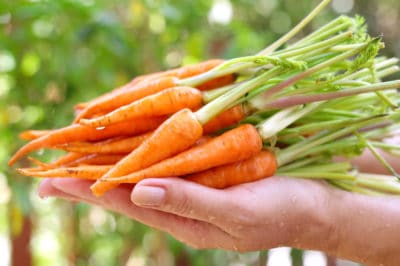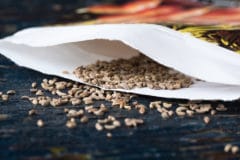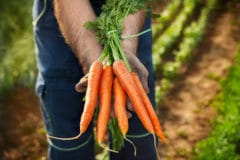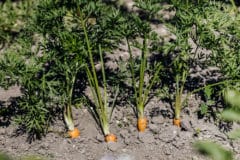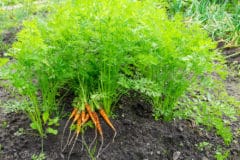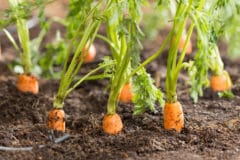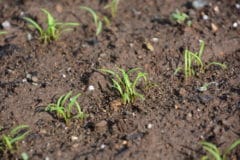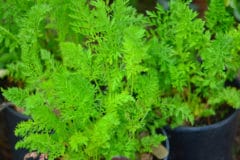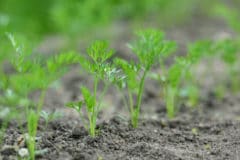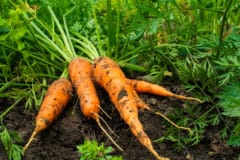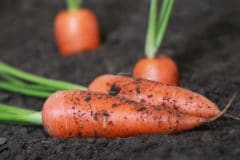Start with Carrot Seeds
Growing baby carrots requires seed, of course. You can buy seeds for the smaller varieties of carrots. These include:
- Little Finger
- Chantenay
- Thumbelina
- Paris Market
- Amsterdam Forcing
You can plant your seeds in your vegetable garden or in containers, and they will grow outdoors or inside the house or garage. Growing baby carrots indoors also means you get all that lovely carrot foliage to enjoy inside, as well.
Baby Carrots are Just Like Grown-Up Carrots
Your baby carrots will grow and develop just like their larger cousins, and they need the same things. Whether in a garden patch or a flower pot, make sure your seeds stay watered. Be sure to keep pots in sunny places, too.
You’ll need to thin your baby carrot seedlings, too. Once when the starts are a couple of inches tall, and once about a month later. The idea is to end up with carrots about two inches apart. At this point, some of the plants you remove will already be big enough to eat!
If you want to feed or fertilize your carrot plants, the best time is just after the second thinning. As with full-sized carrots, avoid using products that contain nitrogen, and don’t use manure. Phosphorous is great for carrots, though!
Picking and Eating
Once your little carrots have an actual “shoulder” visible just below the surface of the soil, they are probably ready to eat. Pull them just like you would regular carrots, being careful not to disturb the roots of nearby plants that may not be ready to eat yet.
Baby carrots are delicious raw, in salads or with dip. They’re quite popular as a snack and in packed lunches, too. Stews and soups, of course, are another great place to use these tiny little veggies. Anyplace you’d use a larger carrot is a perfectly good place for a baby carrot.
